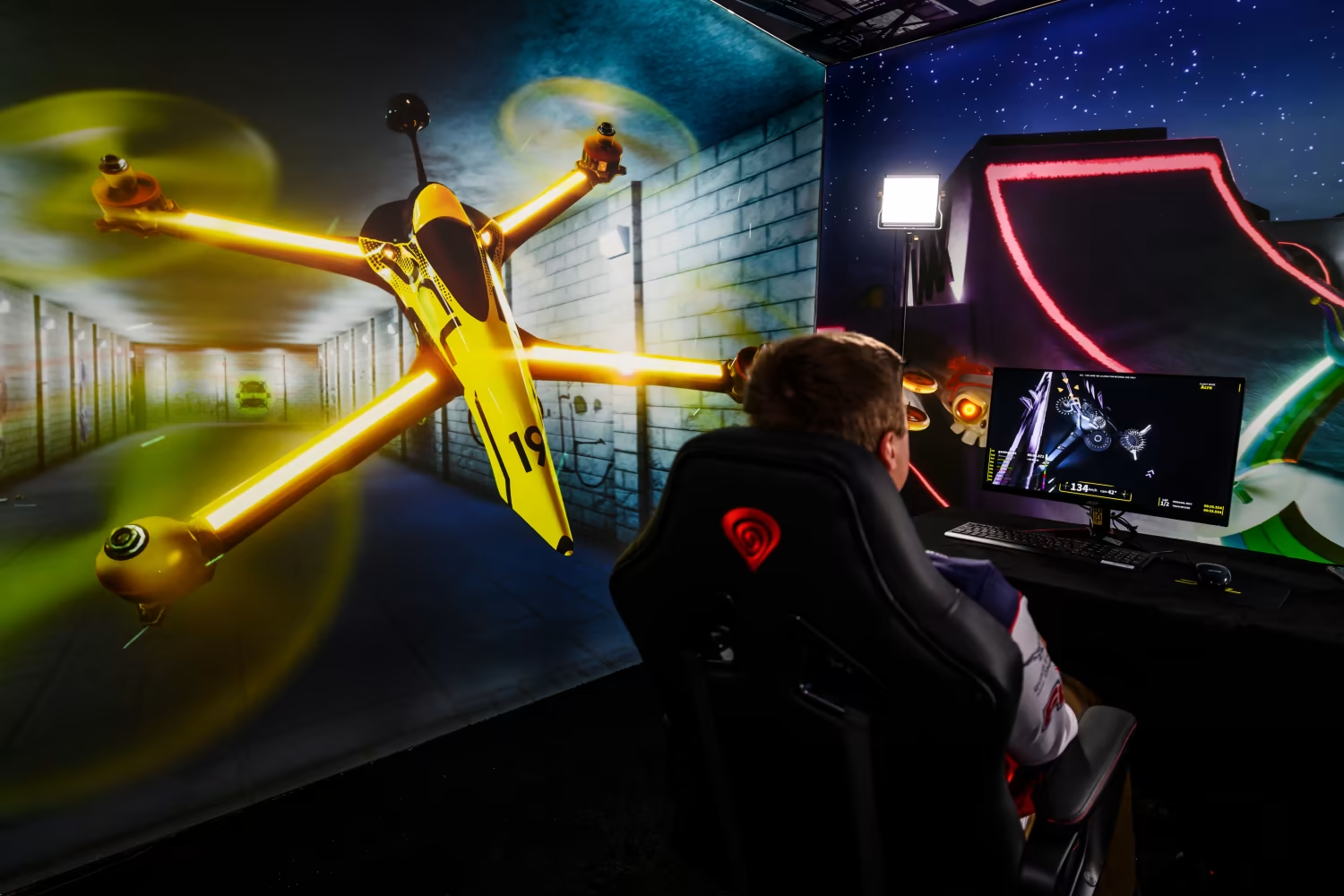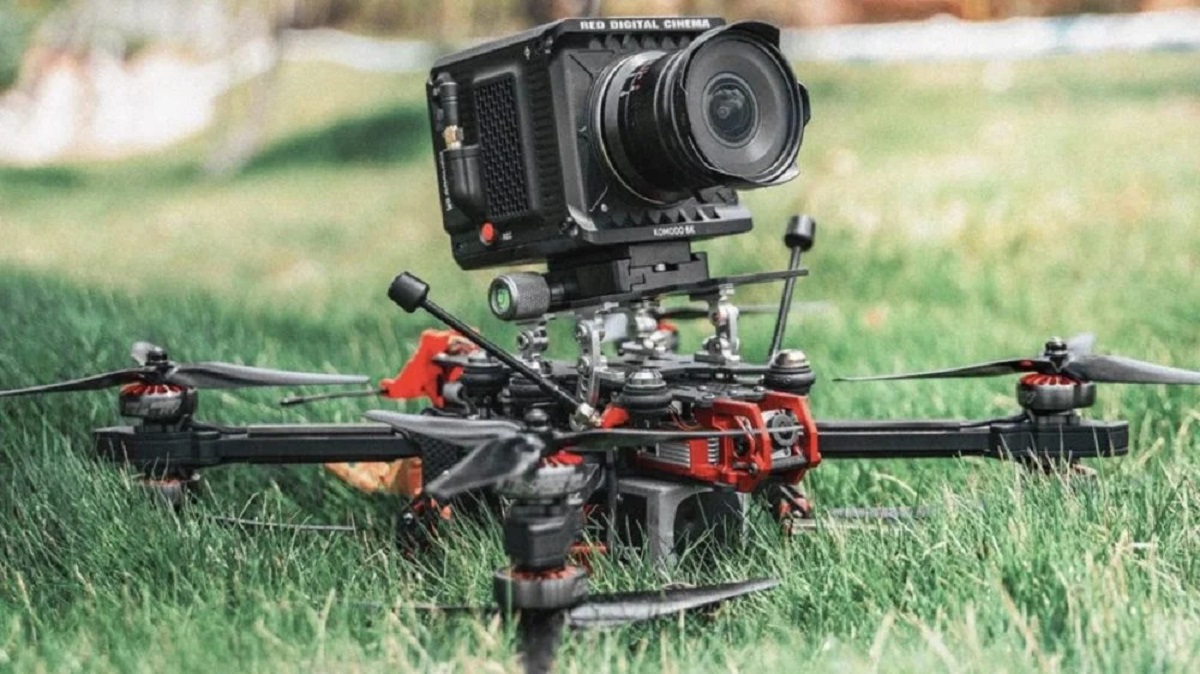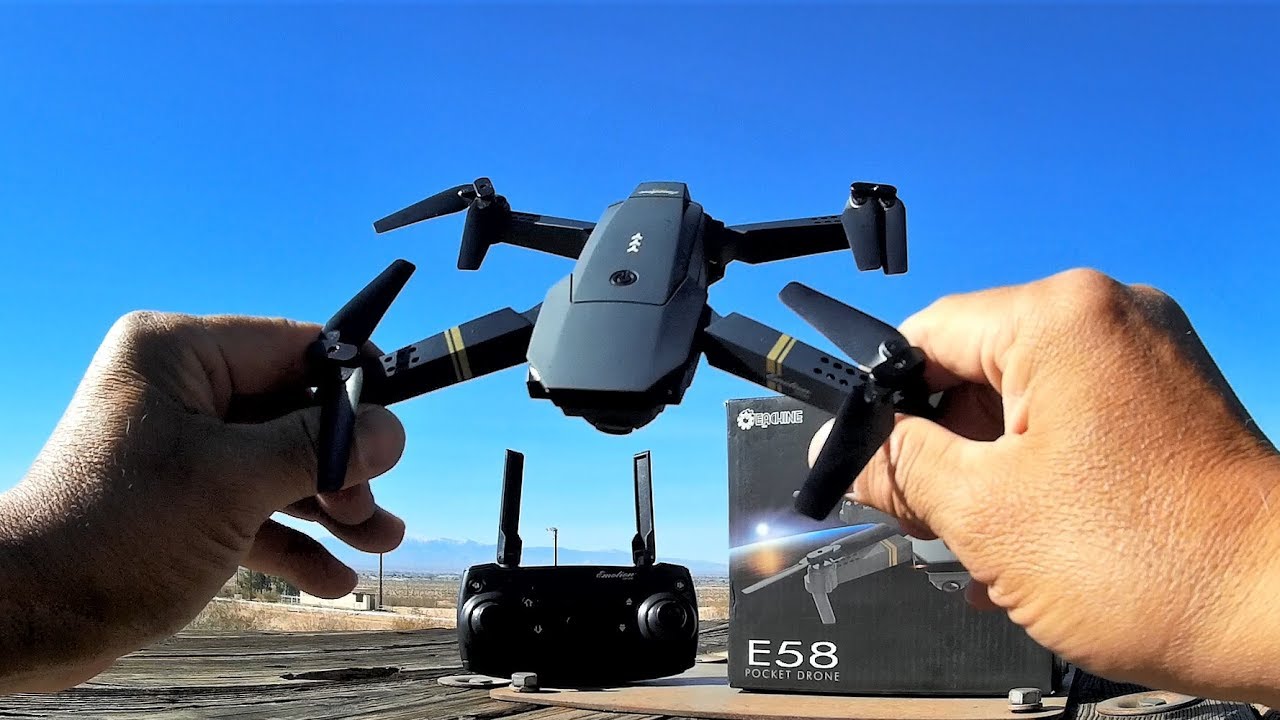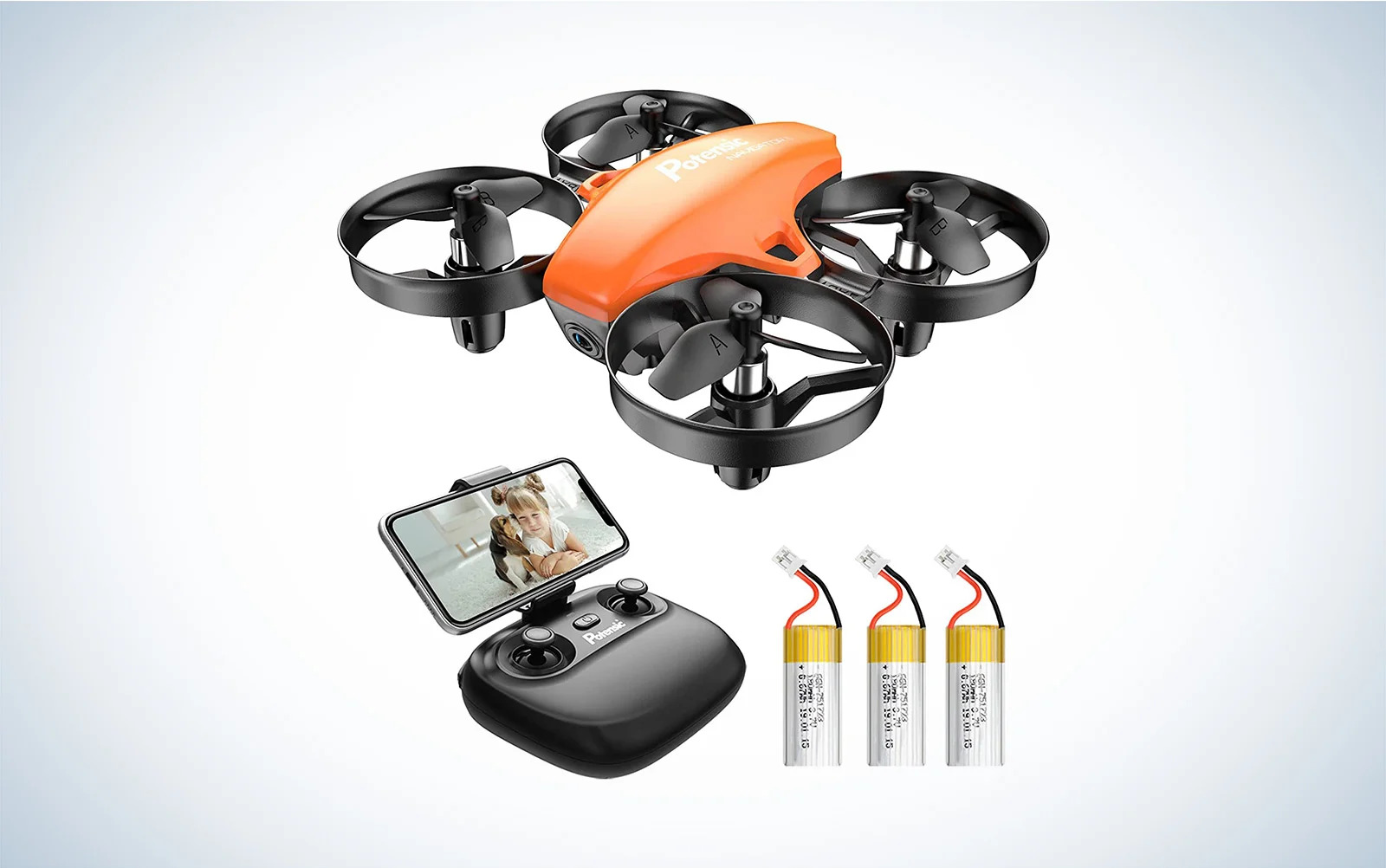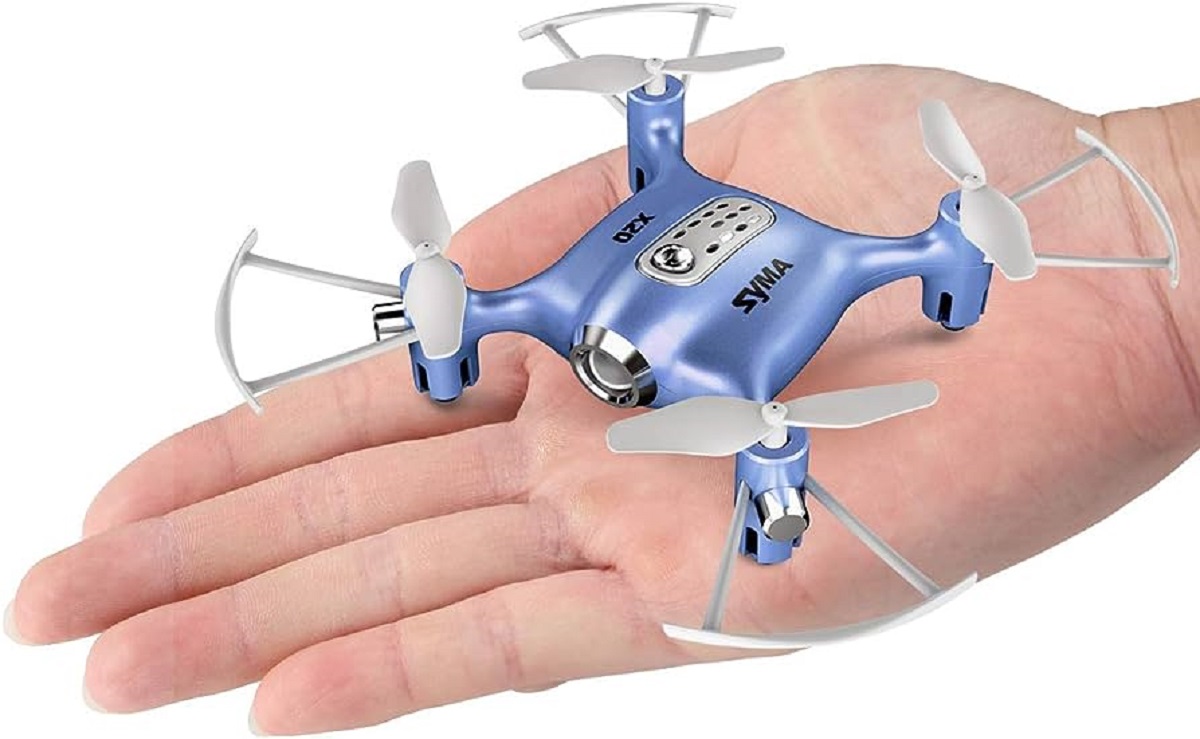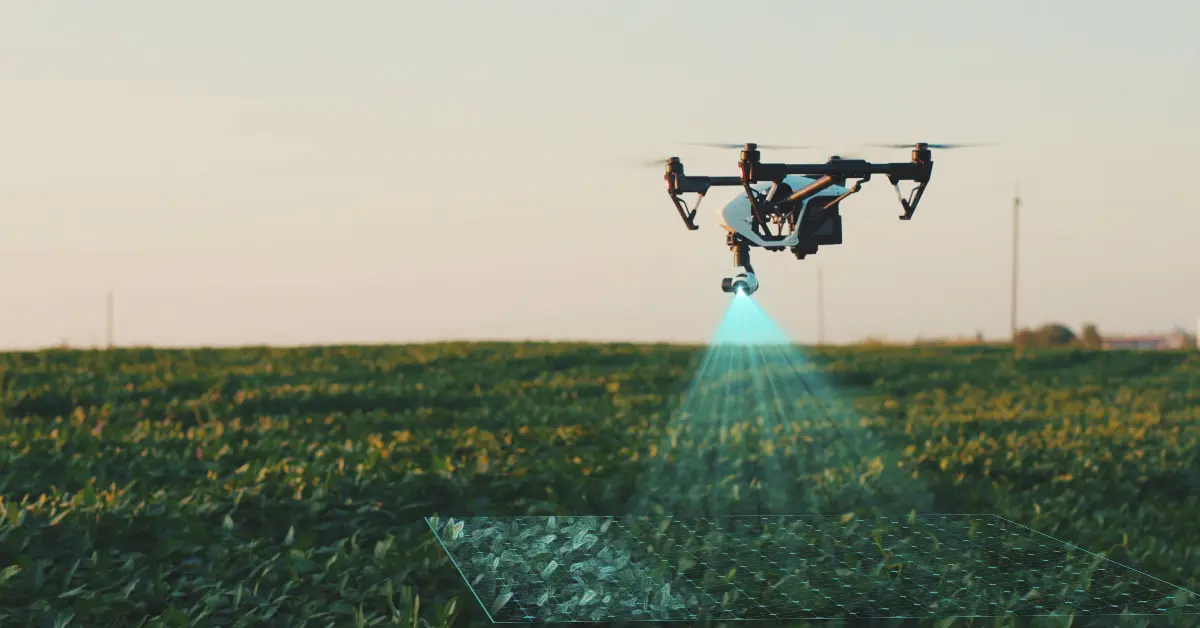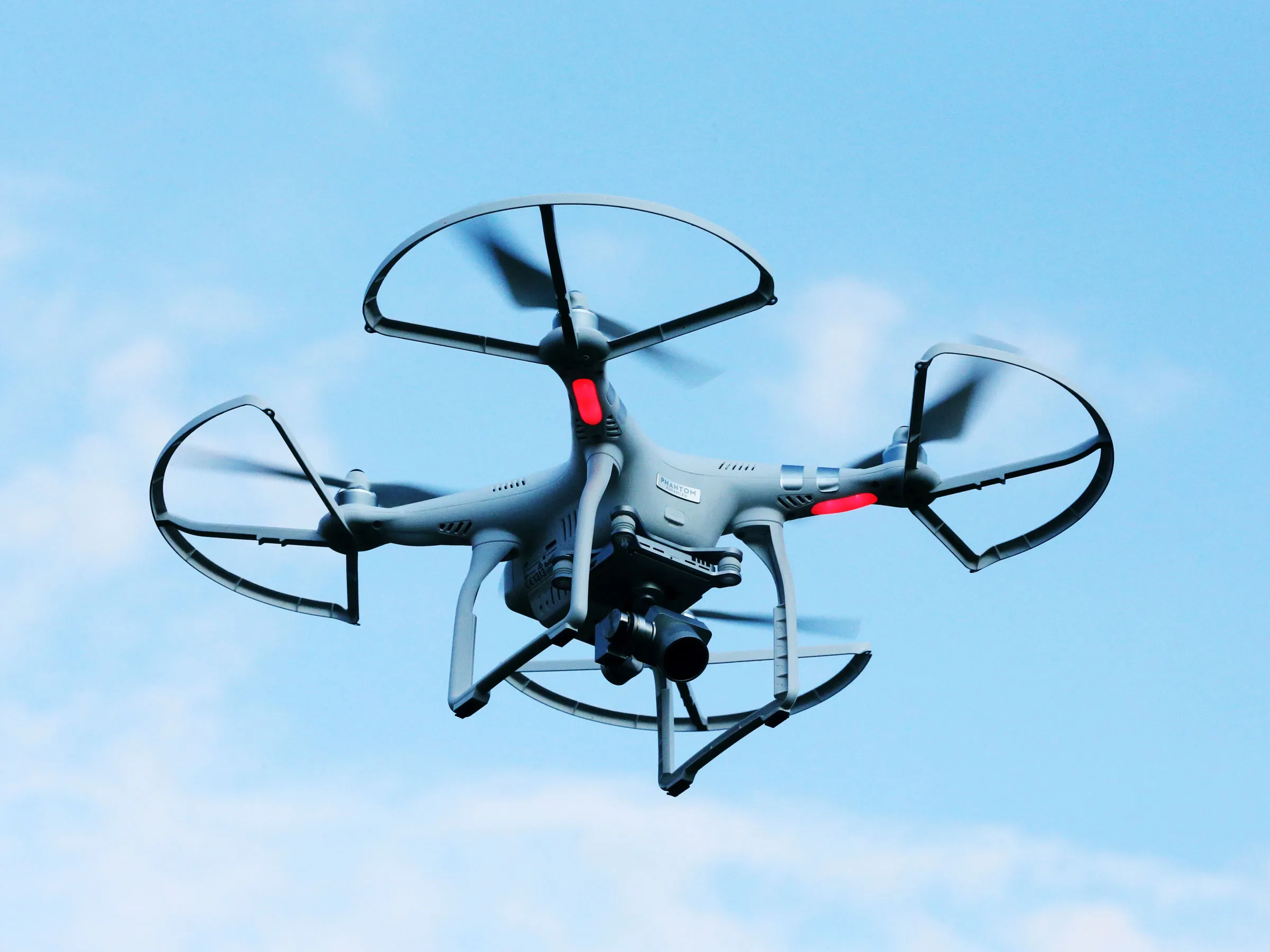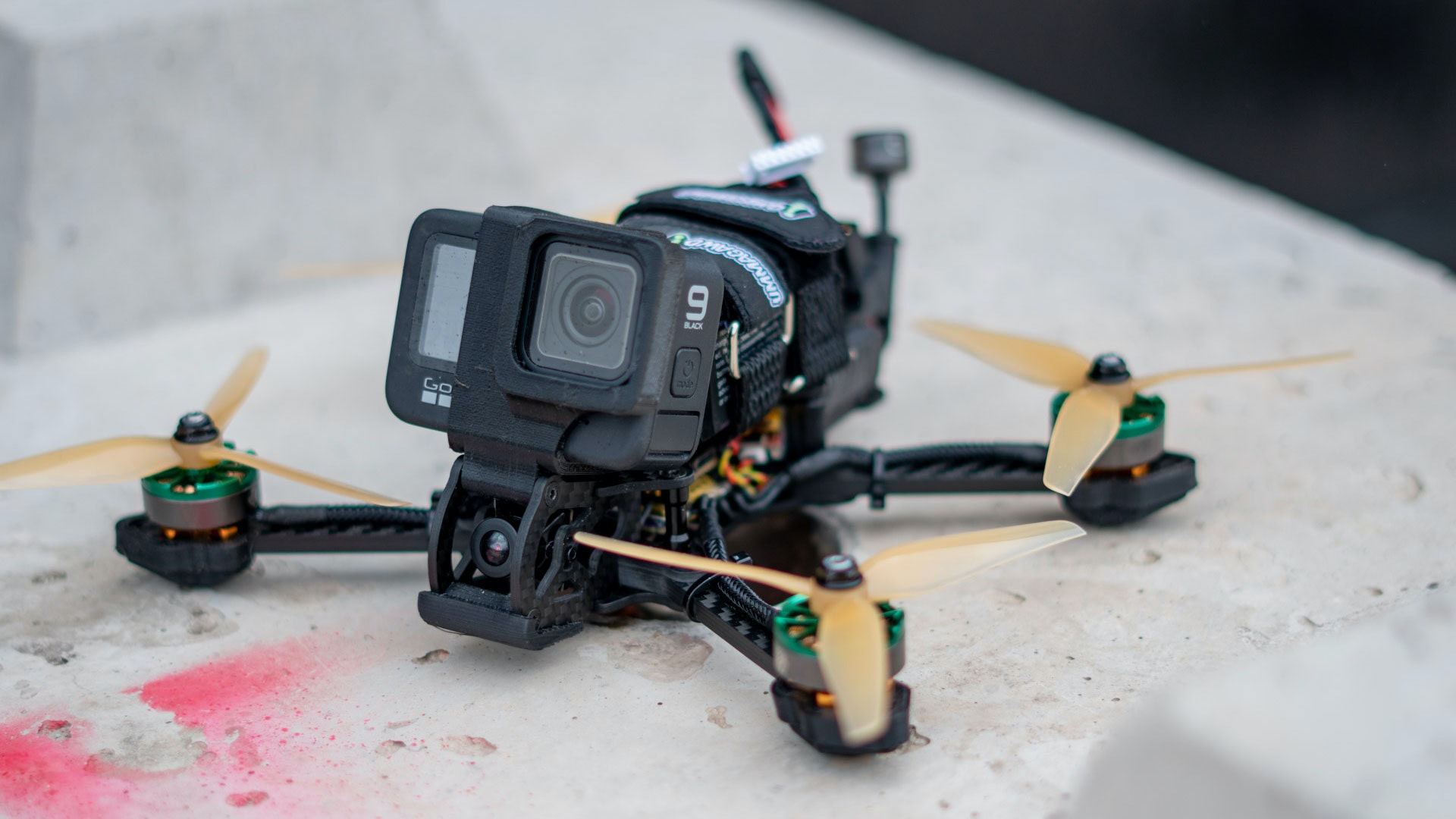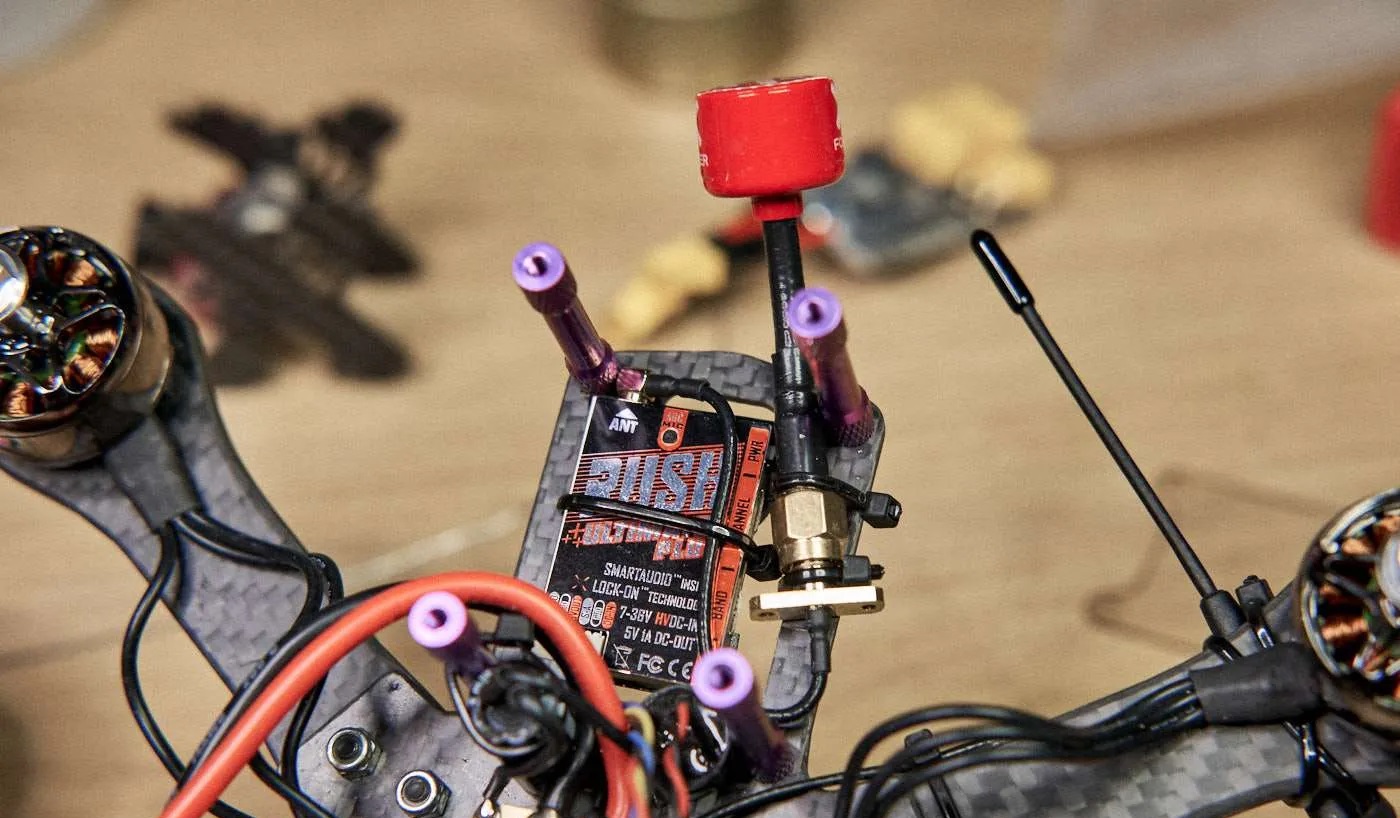Introduction
Welcome to the exciting world of drone racing!
Drone racing has rapidly gained popularity in recent years, captivating both participants and spectators alike. This thrilling sport combines high-speed flying, precision maneuvering, and adrenaline-pumping competition. Whether you are a passionate drone enthusiast or simply curious about this emerging trend, this article will provide you with a comprehensive introduction to the exciting sport of drone racing.
Unlike traditional remote-controlled aircraft, which are typically flown for recreational purposes, drone racing brings a whole new level of excitement. Imagine zooming through obstacle-filled courses at breakneck speeds, navigating tight turns, and executing daring aerial stunts. It is an exhilarating experience that pushes the boundaries of both pilot skill and technological capabilities.
Drone racing is more than just a hobby; it has evolved into a legitimate sporting competition with a growing number of events, leagues, and championships. The sport has garnered a dedicated community of pilots who are constantly innovating and pushing the limits of drone technology to gain a competitive edge.
In this article, we’ll dive into the basics of drone racing, including the equipment needed to participate, how to get started, and the rules and regulations that govern the sport. We’ll also explore the strategies and techniques employed by skilled drone racers, as well as popular events and leagues where the best pilots from around the world compete.
So, whether you’re a seasoned pilot looking to take your skills to the next level or a curious newcomer interested in experiencing the thrill of high-speed drone racing, let’s explore the exciting world of drone racing together.
The Basics of Drone Racing
Drone racing revolves around piloting small, unmanned aircraft, also known as racing drones, through challenging and intricate courses. These courses are designed to test the pilot’s skills in speed, agility, and precision flying. Let’s delve into the key components that make drone racing such an exhilarating and unique sport.
First and foremost, racing drones are not your average off-the-shelf drones. These specialized drones are built specifically for speed and maneuverability. They are lightweight, compact, and often equipped with powerful motors and high-capacity batteries to ensure rapid acceleration and sustained flight. Additionally, racing drones are fitted with customizable components, allowing pilots to optimize performance according to their preferences and racing style.
The flying experience in drone racing is quite different from traditional drone flying. Pilots use first-person view (FPV) goggles, which provide a live video feed from a camera mounted on the drone. This immersive perspective enables pilots to see exactly what the drone sees in real-time, allowing for precise control and swift navigation through the racecourse.
One of the most exciting aspects of drone racing is the sheer speed at which these flying machines can travel. Racing drones can reach speeds of over 80 miles per hour, delivering an adrenaline rush for both the pilot and spectators. The high-speed nature of the sport makes it incredibly thrilling and requires sharp reflexes and split-second decision-making.
Pilots navigate their drones through challenging racecourses, which often feature obstacles such as gates, flags, and hurdles. These obstacles test the pilot’s ability to maneuver the drone accurately and efficiently. The courses are typically set up in open spaces, both indoors and outdoors, providing a dynamic and visually engaging environment for the race.
Drone racing is not just about speed; it also demands precision and control. Pilots must showcase their ability to perform tight turns, execute rapid acceleration and deceleration, and maintain stability during challenging aerial maneuvers. The combination of speed, agility, and precise control is what sets apart the skilled drone racers from the rest.
Another crucial aspect of drone racing is the role of the pilot’s skill and experience. As with any competitive sport, practice is key. Beginners might find it challenging to control the drone at first, but with time and dedication, they can enhance their flying skills and start competing at higher levels. Many drone racing enthusiasts join local clubs or online communities to learn from seasoned pilots and participate in practice sessions and casual races.
In the next sections, we will explore the equipment needed to get started in drone racing, the rules and regulations that ensure fair competition, and the various techniques and strategies employed by skilled drone racers. So, let’s continue our journey into the exciting world of drone racing.
Equipment Needed for Drone Racing
Drone racing requires specialized equipment to ensure a safe and thrilling racing experience. Let’s take a look at the essential gear needed to get started in this exciting sport.
Racing Drone: The centerpiece of drone racing is, of course, the racing drone itself. These drones are designed for speed, agility, and durability. They often feature carbon fiber frames, powerful brushless motors, and high-capacity lithium polymer (LiPo) batteries to provide the necessary power for quick acceleration and sustained flight. Racing drones are typically compact and lightweight to maximize maneuverability.
FPV Goggles: First-person view (FPV) goggles are an essential component of drone racing. These goggles allow pilots to see a live video feed transmitted from a camera mounted on the racing drone. The immersive FPV experience enables pilots to navigate through the racecourse with precision, as if they were sitting in the cockpit of the drone. Quality FPV goggles provide a clear and lag-free video feed for an optimal racing experience.
Transmitter (Radio Controller): A transmitter, also known as a radio controller, is used to pilot the racing drone. Transmitters come in various forms, from traditional joystick-style controllers to more advanced gamepad-like controllers. It is important to choose a transmitter that is comfortable to hold and offers precise control inputs. Some transmitters also feature additional functions, such as programmable switches and customizable settings, to cater to the pilot’s preferences.
Video Receiver: In addition to FPV goggles, a video receiver is required to receive the live video feed from the racing drone. This receiver is connected to the goggles to ensure a seamless and uninterrupted video transmission. It is important to choose a quality video receiver that supports the frequency bands used for drone racing in your region.
Antennas: Antennas play a crucial role in maintaining a strong and reliable video signal. Both the racing drone and the video receiver require antennas for transmitting and receiving signals. Circular polarized omnidirectional antennas are commonly used for racing drones, while patch antennas or helical antennas are popular choices for the video receiver. It is recommended to invest in high-quality antennas to maximize signal strength and range.
Batteries and Charging Equipment: Racing drones rely on high-capacity LiPo batteries for power. It is essential to have multiple batteries to ensure uninterrupted racing sessions. Additionally, a reliable battery charger capable of charging multiple LiPo batteries simultaneously is necessary to keep the batteries in optimal condition. Proper care and maintenance of LiPo batteries, including storing them in a fireproof container and adhering to safe charging practices, are vital for safety and longevity.
Tools and Spare Parts: Like any mechanical device, racing drones may require occasional repairs and maintenance. It is advisable to have a basic set of tools, such as screwdrivers and pliers, for quick fixes. Additionally, keeping spare parts such as propellers, motors, and electronic components on hand can save valuable racing time in case of accidents or failures.
Protective Gear: Safety is paramount in drone racing. Pilots should wear appropriate protective gear, such as goggles or safety glasses, to shield their eyes from debris or potential collisions. Additionally, it is advisable to wear gloves to protect hands from any sharp edges or rotating propellers. Adhering to safety guidelines and regulations is crucial to ensure a safe racing environment for both pilots and spectators.
Purchasing high-quality equipment from reputable manufacturers is essential for a smooth and enjoyable racing experience. It is worth investing in reliable gear to minimize the risk of equipment failures and ensure optimal performance on the racecourse.
In the next section, we will explore how to get started in drone racing, including finding suitable training locations, joining racing communities, and honing your piloting skills. So, let’s continue our journey into the exciting world of drone racing together!
How to Get Started in Drone Racing
Getting started in drone racing is an exciting journey that combines learning, practice, and immersion into the racing community. Here are the key steps to kickstart your drone racing adventure:
1. Learn the Basics: Before diving into drone racing, it is essential to familiarize yourself with the fundamentals of flying and controlling a drone. Start by practicing with a beginner-friendly drone to grasp the basic flight controls and gain confidence in maneuvering the aircraft. Online tutorials and instructional videos can also provide valuable insights into drone operation and control.
2. Find Suitable Training Locations: Look for open spaces such as parks, fields, or even empty parking lots for practicing your drone racing skills. Make sure the location adheres to local regulations regarding drone flying. Joining local drone hobbyist groups or racing communities can provide valuable information on drone-friendly locations in your area.
3. Join Racing Communities: Engaging with fellow drone racing enthusiasts and experienced pilots is a great way to learn and improve your skills. Look for local drone racing clubs or online communities where you can connect with like-minded individuals, participate in group races, and benefit from their knowledge and experience. These communities often organize practice sessions, workshops, and friendly competitions to help newcomers get started and improve their racing abilities.
4. Practice, Practice, Practice: Consistent practice is key to becoming a proficient drone racer. Set aside dedicated practice sessions to work on your flying skills, maneuvering techniques, and speed control. Start with simple flight patterns, gradually progressing to more challenging maneuvers and race-like scenarios. Regular practice will enhance your hand-eye coordination, decision-making abilities, and overall piloting skills.
5. Upgrade to a Racing Drone: As you gain confidence and proficiency, consider upgrading to a purpose-built racing drone. These drones offer higher performance, customization options, and greater speed capabilities. Invest in a racing drone that aligns with your budget and racing goals. Many racing drones come in ready-to-fly (RTF) or almost-ready-to-fly (ARTF) packages, simplifying the setup process for beginners.
6. Attend Local Races and Competitions: Once you feel comfortable with your skills, start participating in local drone racing events and competitions. These events provide valuable opportunities to test your mettle against other racers, learn from experienced pilots, and gain exposure to the competitive drone racing scene. Take part in both casual races and organized tournaments to challenge yourself and improve your racecraft.
7. Continue Learning and Improving: Drone racing is a constantly evolving sport, and there is always room for improvement. Stay up-to-date with the latest advancements in drone technology, racing techniques, and equipment upgrades. Learn from experienced racers, watch racing videos, and analyze your own race performances to identify areas for growth. The pursuit of improvement and learning is a never-ending process in drone racing.
Remember to fly responsibly and adhere to local regulations and safety guidelines while engaging in drone racing activities. Continuously prioritize safety and respect for others when operating your racing drone.
In the next section, we will explore the rules and regulations that govern drone racing, ensuring fair competition and safety for all participants. So, let’s continue our journey into the exciting world of drone racing!
The Rules and Regulations of Drone Racing
Drone racing, like any sport, has rules and regulations in place to ensure fair competition and maintain safety for both pilots and spectators. These guidelines help create a level playing field for all participants and prevent any potential risks associated with drone racing. Let’s explore some of the key rules and regulations that govern this exhilarating sport:
1. Racing Course Guidelines: Each racing course has specific guidelines that dictate the layout, dimensions, and placement of obstacles. These guidelines ensure consistent and fair racing conditions for all pilots. Racers must navigate the course within the designated boundaries and pass through designated gates or flags to complete a lap successfully.
2. Safety Protocols: Safety is a top priority in drone racing. Pilots are required to adhere to safety protocols that include not flying above certain altitudes, maintaining a safe distance from spectators, and avoiding hazardous areas. Additionally, pilots must conduct pre-flight and post-flight checks on their drones to ensure the aircraft is in proper working condition.
3. Frequency Management: Drone racing events often take place in areas where multiple drones are operating simultaneously. To prevent interference and ensure smooth signal transmission, frequency management protocols are implemented. Pilots must use assigned frequency channels or manage frequency bands to avoid signal conflicts during races.
4. Racing Categories: Drone races are often divided into different categories based on factors such as drone weight, size, and power systems. These categories allow pilots to compete against others using similar equipment, ensuring a fair competition and eliminating potential advantages arising from varying drone capabilities.
5. Pilot Conduct: Pilots are expected to demonstrate good sportsmanship and abide by a code of conduct during races. This includes respecting fellow pilots, event organizers, and officials. Any unsporting behavior or intentional interference can result in penalties or disqualification from the race. Pilots must also follow the instructions of race officials throughout the event.
6. Drone Identification: To streamline race management and improve safety, drones are often required to display visible identification markings. These markings help identify each drone during races, enabling officials to track and monitor the participants effectively.
7. Insurance Requirements: Depending on the location and nature of the race, organizers may require pilots to have liability insurance coverage. This helps mitigate any potential risks associated with drone operations and ensures financial protection in case of accidents or damages.
It is crucial for aspiring drone racers to familiarize themselves with the specific rules and regulations governing their respective racing events or leagues. Adhering to these guidelines not only maintains fair competition but also promotes a safe environment for all participants and spectators.
In the next section, we will delve into racing drone setups and modifications, exploring how pilots customize their drones to gain a competitive edge in races. So, let’s continue our journey into the exciting world of drone racing!
Racing Drone Setups and Modifications
In the world of drone racing, customization and modifications are key to gaining a competitive edge on the racecourse. Experienced pilots often fine-tune their racing drones to optimize performance and enhance maneuverability. Let’s explore some of the common setups and modifications that are popular among drone racers:
1. Frame: The frame of a racing drone plays a crucial role in overall performance. Frames made of lightweight materials, such as carbon fiber, are preferred for their durability and rigidity. The design of the frame can vary, with some models emphasizing aerodynamic shapes for improved speed and reduced drag.
2. Motors and Propellers: Racing drones are typically equipped with high-performance brushless motors that provide the necessary power and speed. Pilots often experiment with different motor sizes, KV ratings, and propeller combinations to achieve the desired balance between speed, thrust, and maneuverability.
3. Flight Controller: The flight controller is the brain of the racing drone, responsible for stabilizing the aircraft and executing flight control commands. Advanced flight controllers offer features such as custom PID tuning, adjustable rates, and configurable flight modes. Pilots fine-tune these settings to match their flying style and optimize control responsiveness.
4. Electronic Speed Controllers (ESCs): ESCs regulate the power supply to the drone’s motors, influencing acceleration, response time, and overall performance. Optimal ESC settings are crucial for smooth and precise control, especially during rapid speed changes and tight cornering. Pilots often adjust ESC parameters to fine-tune acceleration and braking characteristics.
5. Battery and Power System: Racing drones require high-capacity lithium polymer (LiPo) batteries that can deliver enough current to meet the power demands during races. Pilots carefully select batteries with appropriate voltage, capacity, and discharge rates to ensure optimal performance and prolonged flight times.
6. FPV Camera and Video Transmitter: The FPV camera provides the live video feed that allows pilots to navigate through the racecourse. Choosing a camera with a fast refresh rate and low latency is crucial for real-time video transmission. Additionally, selecting a reliable video transmitter with sufficient power output ensures a strong and stable video signal during races.
7. Antennas: Racing drones often utilize both circular polarized omnidirectional antennas and directional antennas to achieve a balance between signal coverage and range. Antenna placement and orientation can significantly impact signal strength and video reception, so pilots experiment to find the most optimal setup for their specific racing environment.
8. Accessories and Add-ons: Additional accessories and add-ons, such as LED lights for visibility, buzzers for locating a lost drone, and GPS modules for precise positioning, can be incorporated into racing drone setups. These accessories improve situational awareness and aid in recovery or navigation during races.
It is important to note that modifications and upgrades should be performed with caution and adherence to safety guidelines. Pilots should thoroughly understand the impact of each modification on the overall performance of their drone and ensure that the modifications comply with the rules and regulations of the specific racing event or league.
In the next section, we will explore the techniques and strategies employed by skilled drone racers, providing insights into how they navigate racecourses and gain a competitive edge. So, let’s continue our journey into the exciting world of drone racing!
Techniques and Strategies for Drone Racing
Drone racing is not just about speed; it requires skill, precision, and strategic thinking. Skilled pilots employ various techniques and strategies to maximize their performance on the racecourse. Let’s explore some of the key techniques and strategies used by experienced drone racers:
1. Line Selection: Choosing the optimal line through the racecourse is crucial for maintaining speed and minimizing time loss. Skilled pilots carefully analyze the layout of the course and identify the most efficient path to take. This involves taking into account the positioning of gates, turns, and obstacles, and calculating the best trajectory to maintain momentum.
2. Cornering: Mastering cornering techniques is essential for gaining an advantage in drone racing. Skilled pilots utilize techniques such as carving, where the drone follows a smooth arc through a turn, and power sliding, where they control the throttle during a turn to maintain speed while making a sharp corner. Proper cornering techniques allow pilots to maintain speed and position themselves for the next section of the racecourse.
3. Acceleration and Deceleration: Finding the right balance between acceleration and deceleration is crucial for optimal speed management during a race. Skilled pilots know when to apply full throttle to gain momentum and when to reduce speed to navigate tight turns or intricate sections of the course. Effective management of acceleration and deceleration results in smoother flight and better control.
4. Obstacle Navigation: Racecourses often feature challenging obstacles such as gates, flags, or tunnels. Pilots employ precise control and spatial awareness to navigate through these obstacles swiftly without colliding. They strategically plan their approach to minimize time loss and adjust their flight path dynamically to avoid collisions or course penalties.
5. Defensive Flying: In a competitive race, pilots must not only focus on their own performance but also be aware of their opponents. Skilled drone racers employ defensive flying techniques to prevent opponents from overtaking or gaining an advantage. This includes strategically positioning their drone to block overtaking opportunities or forcing opponents into less favorable racing lines.
6. Mental Preparation: Drone racing requires intense concentration and focus. Skilled pilots practice mental preparation techniques to maintain composure during races. They develop strategies to handle stress and racing pressure, visualize the racecourse beforehand, and mentally prepare for different scenarios. Mental preparation helps pilots stay focused and make split-second decisions while racing.
7. Analyzing and Learning from Race Footage: After a race, skilled pilots review their race footage to analyze their performance and identify areas for improvement. They closely examine their lines, maneuvering techniques, and decision-making to understand where they can gain time and increase efficiency. Learning from previous races and applying lessons learned in subsequent races is a key strategy for continuous improvement.
While technique and strategy are vital for success in drone racing, it’s equally important to remain adaptable and open to learning. The best pilots continually refine their techniques, experiment with new strategies, and adapt to different race conditions and course layouts.
In the next section, we’ll explore some of the popular drone racing events and leagues, highlighting the platforms where pilots can showcase their skills and compete against the best in the world. So, let’s continue our journey into the exciting world of drone racing!
Popular Drone Racing Events and Leagues
Drone racing has gained immense popularity worldwide, leading to the emergence of numerous events and leagues that attract talented pilots from around the globe. These events serve as platforms for pilots to showcase their skills, compete against each other, and gain recognition in the drone racing community. Let’s explore some of the most popular drone racing events and leagues:
1. Drone Racing League (DRL): The Drone Racing League is one of the premier competitive racing leagues in the world. It features high-speed racing in epic locations, utilizing custom-built racecourses with elaborate obstacles and immersive lighting effects. The DRL hosts both online qualifiers and live events, showcasing the best pilots in intense head-to-head races. The league boasts a professional circuit and offers substantial prize money, making it enticing for aspiring professional drone racers.
2. MultiGP: MultiGP is a grassroots racing organization that focuses on local and regional drone racing events. The organization supports chapters and clubs worldwide, allowing pilots of all skill levels to participate in organized races. MultiGP hosts regional qualifiers, championships, and an annual international Open event. The structure of MultiGP events provides opportunities for pilots to progress through the ranks and earn recognition within the drone racing community.
3. The World Drone Prix: The World Drone Prix, held in various locations globally, is one of the largest and most prestigious drone racing events. Pilots from different countries come together to compete for a substantial prize purse. The World Drone Prix gained significant attention when it hosted the first million-dollar drone race, attracting top pilots and media coverage from around the world.
4. IDRA International Open: The IDRA (International Drone Racing Association) International Open is a multi-day event that brings together drone racing enthusiasts from all skill levels. The event features a range of races, including individual and team competitions, freestyle events, and additional activities such as workshops and exhibitions. It serves as a gathering point for pilots to network, learn, and celebrate the sport of drone racing.
5. FAI World Drone Racing Championship: Organized by the Fédération Aéronautique Internationale (FAI), the World Drone Racing Championship is a highly esteemed event that showcases the skills of international pilots. The competition follows a standardized format and attracts top talent from around the world. The FAI World Drone Racing Championship crowns the best drone racing pilots across multiple categories, including team and individual races.
6. Regional and National Events: In addition to the global events and leagues, numerous regional and national drone racing events take place worldwide. These events provide opportunities for pilots at different skill levels to compete, gain experience, and establish themselves in the drone racing community. Local clubs and organizations often host these events to foster a sense of camaraderie among pilots within their respective regions.
These are just a few examples of the many popular drone racing events and leagues that exist. Each event offers its unique atmosphere, challenges, and prize structures. Participating in these events not only allows pilots to test their skills against top competitors but also provides exposure and networking opportunities that can propel their drone racing careers.
In the next section, we will explore the differences between drone racing and real-life racing, highlighting the unique aspects of this exciting sport. So, let’s continue our journey into the exciting world of drone racing!
Drone Racing vs. Real-Life Racing
Drone racing and real-life racing may share some similarities in terms of competition and skill, but they are distinctly different sports. Let’s explore the key differences between drone racing and real-life racing:
1. Perspective: One of the most significant differences between the two forms of racing is the perspective from which they are experienced. In real-life racing, such as car or motorcycle racing, the driver is physically in the vehicle and experiences the race from a first-person perspective. In contrast, drone racing offers a first-person view (FPV) experience, where the pilot uses goggles or a screen to view the live feed from the drone’s camera. This unique FPV perspective allows for an immersive experience and adds a new dimension to the racing experience.
2. Accessible Locations: Real-life racing typically requires specialized tracks, circuits, or roadways, which may be limited to specific locations and only accessible during designated times. Drone racing, on the other hand, can take place in a variety of locations, both indoors and outdoors. This flexibility allows for drone racing events to be organized in a wider range of venues, making it more accessible and convenient for participants and spectators alike.
3. Physicality: Real-life racing involves physical exertion and demands a high level of fitness and skill from the drivers. Pilots in drone racing, on the other hand, rely on their cognitive abilities and hand-eye coordination to control the drone. While physical fitness is not as crucial in drone racing, it still requires mental focus, quick reflexes, and precision control to navigate the racing course at high speeds.
4. Risk and Safety: Real-life racing involves inherent risks due to the high speeds, physical impacts, and potential for injuries. Safety measures such as protective gear, roll cages, and strict regulations are necessary to mitigate these risks. In drone racing, the risk of physical harm to the pilot is minimal since they are not physically present in the aircraft. Safety measures in drone racing primarily revolve around ensuring the safety of spectators and adherence to regulations regarding flying locations and public spaces.
5. Cost and Accessibility: Real-life racing can be an expensive sport, involving the costs associated with owning and maintaining vehicles, participating in races, and traveling to various race venues. Drone racing, on the other hand, offers a relatively more accessible entry point. While racing drones can still be a significant investment, especially for high-performance setups, the overall cost of entry into the sport is generally lower compared to real-life racing.
6. Technological Innovation: Drone racing is at the forefront of technological innovation. As the sport continues to evolve, advancements in drone technology, flight controllers, and FPV systems push the boundaries of what is possible in terms of speed, agility, and video transmission. Real-life racing also benefits from technological advancements in areas such as vehicle performance, safety features, and telemetry systems, but the pace of innovation in drone racing is notably faster.
While both forms of racing offer thrilling experiences, the unique aspects of drone racing, such as the FPV perspective, accessibility, and technological innovation, contribute to its growing popularity and appeal among racing enthusiasts.
In the next section, we will explore the future of drone racing, including potential developments and the impact of the sport on a global scale. So, let’s continue our journey into the exciting world of drone racing!
The Future of Drone Racing
Drone racing is an exhilarating sport that has experienced rapid growth and innovation in recent years. As technology continues to advance and the popularity of the sport increases, the future of drone racing holds great potential in several areas:
1. Technological Advancements: The evolution of drone technology is set to play a significant role in the future of drone racing. Manufacturers continue to push the boundaries of what is possible in terms of speed, agility, and endurance. We can expect to see even more powerful and efficient racing drones with enhanced features, flight controls, and customizable options. Advancements in battery technologies will also lead to longer flight times, enabling pilots to participate in longer races and endurance challenges.
2. Spectator Experience: With the immersive first-person view (FPV) perspective, drone racing offers a unique spectator experience. As the sport continues to gain attention, we can expect to see innovations focused on enhancing the viewing experience for spectators. This may include specialized viewing areas, immersive virtual reality (VR) experiences, or augmented reality (AR) overlays that provide real-time data and statistics during races.
3. Professional Racing Leagues: The emergence of professional racing leagues, such as the Drone Racing League, is a testament to the potential of drone racing as a mainstream sport. As more pilots aim to pursue a career in drone racing, we can expect to see the development of structured, professional racing circuits with larger prize pools, sponsorships, and media partnerships. This will further elevate the status of drone racing as a legitimate sport and provide opportunities for professional pilots to showcase their skills on a global stage.
4. Drone Racing Education: As drone racing continues to captivate the interest of drone enthusiasts, there will be an increased focus on educational programs and training initiatives. This will include formalized training courses, workshops, and mentoring programs aimed at nurturing young talent and developing the skills of aspiring drone racers. Educational institutions may offer specialized programs in drone racing or incorporate it into existing curricula, providing a pathway for individuals to pursue a career in the sport.
5. Integration of Artificial Intelligence (AI): The integration of AI technology has the potential to revolutionize drone racing. AI-powered racing drones could compete against human pilots, offering an entirely new level of competition. Additionally, AI can be utilized for safety measures, such as real-time obstacle detection and collision avoidance systems, enhancing the overall racing experience and mitigating risks.
6. Global Expansion: Drone racing has already gained international recognition, but its global reach is set to expand further. As more countries embrace the sport, we can expect to see the establishment of regional and national racing series, along with an increase in cross-border competitions and championships. This will further foster the growth of a diverse and inclusive global drone racing community.
The future of drone racing is indeed exciting, and the possibilities are vast. As the sport continues to evolve, we can anticipate ongoing technological advancements, increased professionalism, enhanced spectator experiences, expanded educational opportunities, and a broadening global reach. The fusion of technology, human skill, and innovative competition will undoubtedly continue to drive the growth and appeal of drone racing in the years to come.
In the next section, we will wrap up our exploration of the exciting world of drone racing. So, let’s conclude our journey with a reflection on the remarkable aspects of this thrilling sport!
Conclusion
Drone racing is a captivating sport that combines the thrill of high-speed flying, precision maneuvering, and strategic competition. As we have explored in this article, drone racing offers a unique and immersive experience for both pilots and spectators alike.
From the basics of drone racing and the equipment needed, to the rules and regulations that govern the sport, we have delved into the intricacies of this exciting activity. We have witnessed the dedication and skill required to excel in drone racing, as well as the innovative techniques and strategies employed by top pilots.
Drone racing is not limited to a single event or league; it has spread worldwide with numerous competitions and organizations offering opportunities for pilots at all skill levels. The future of drone racing looks promising, with advancements in technology, increased professionalism, and a growing global reach.
As drone racing continues to evolve, it will undoubtedly inspire the next generation of pilots, innovators, and enthusiasts. Its unique blend of technology, skill, and adrenaline makes it a sport that captures the imagination like no other. So whether you’re a seasoned pilot or just starting your journey into the world of drones, I encourage you to explore the thrilling world of drone racing and experience the exhilaration firsthand.
Strap on your FPV goggles, prepare for high-speed action, and immerse yourself in the thrilling world of drone racing!







